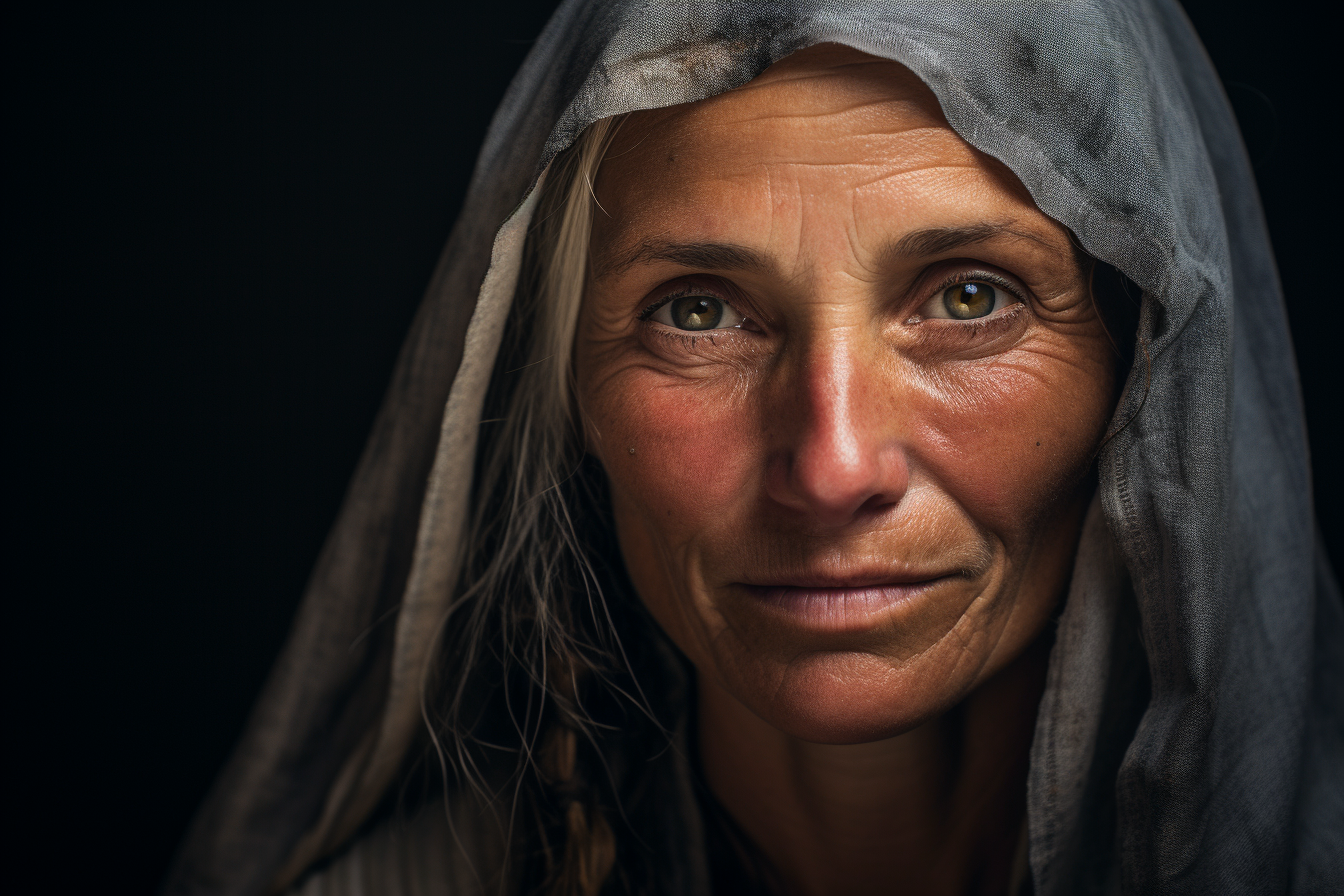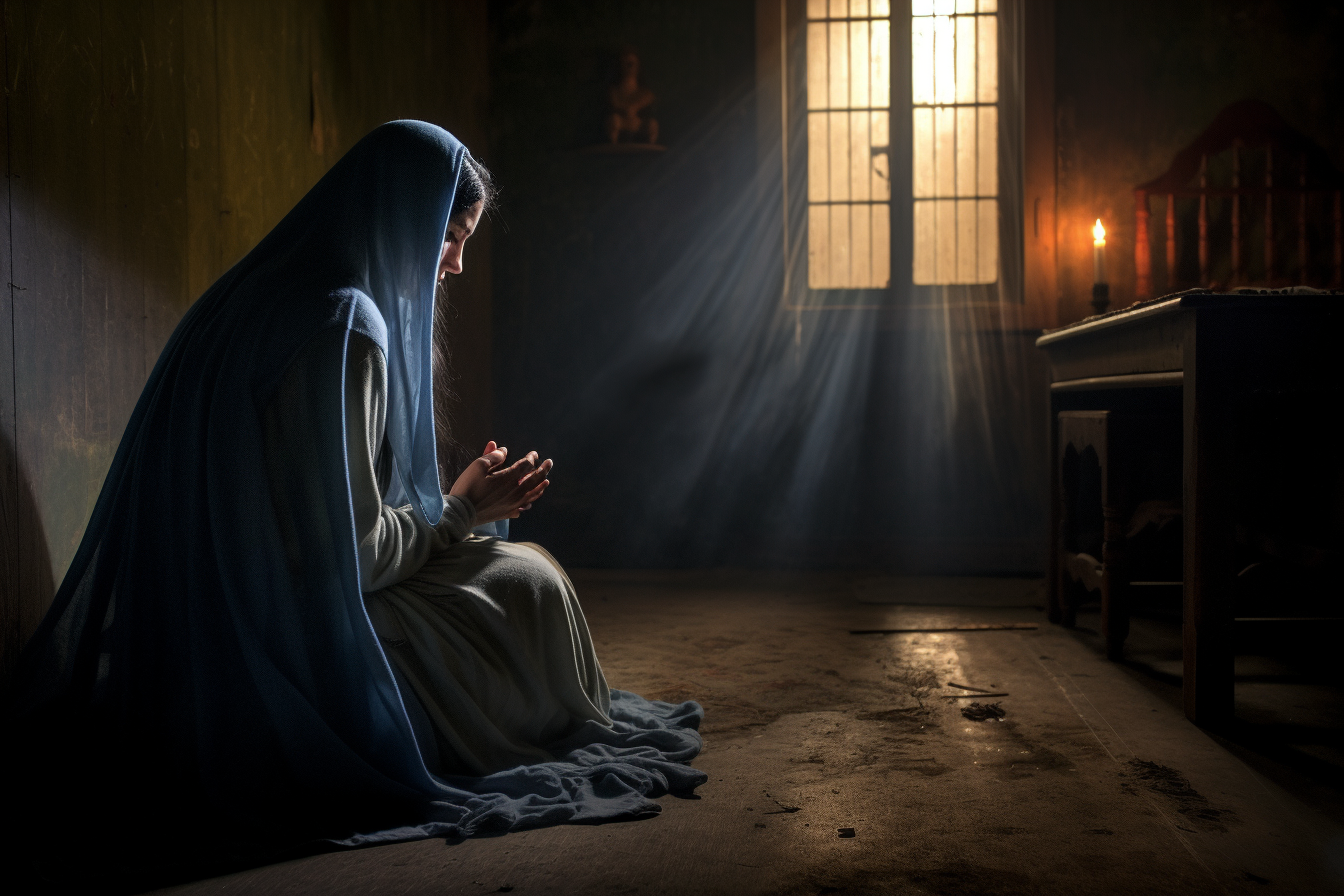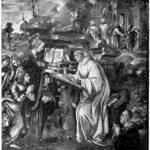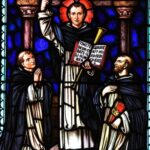
St. Monica
St. Monica
“Son, nothing in this world now affords me delight.
I do not know what is left for me to do or why.
I’m still here, all my hopes in this world now fulfilled.”
– St. Monica to his son, St. Augustine of Hippo
Sure, I’d be happy to help you with the article on St. Monica. Here are the details, presented in an interesting manner:
When they lived: St. Monica, also known as Monica of Hippo, lived during the late 4th century and early 5th century AD.
Where they lived: St. Monica lived in Tagaste, a small town in the Roman province of Numidia, which is present-day Algeria.
Notable world events during the time of their life:
- 410 AD – Sack of Rome: In 410 AD, the Visigoths, under King Alaric, invaded and sacked Rome. This event shocked the Roman Empire, as it was the first time in 800 years that the city had been captured by a foreign enemy.
- Augustine’s Conversion to Christianity: During Monica’s lifetime, her son, Augustine of Hippo, went through a transformational spiritual journey. He converted to Christianity, eventually becoming one of the most influential Church Fathers and theologians.
- Declaration of Christianity as the state religion: In 380 AD, the Roman Emperor Theodosius I issued the Edict of Thessalonica, also known as the “Cunctos populos” decree, declaring Nicene Christianity as the state religion of the Roman Empire.
- Founding of Constantinople: In 330 AD, the Roman Emperor Constantine the Great founded the city of Constantinople (present-day Istanbul) as the new capital of the Eastern Roman Empire. This marked a significant shift in the empire’s political and cultural center.
- 375 AD – Hunnic Invasions: The Huns, a fierce nomadic tribe from Central Asia, started their invasions into Eastern Europe and the Roman Empire around 375 AD, causing widespread upheaval and migrations of various tribes and peoples.
Patronage: St. Monica is the patron saint of mothers, wives, and abusive marriages. Her unwavering faith and dedication to prayer, even in the face of difficult circumstances, make her an inspiring figure for those seeking guidance in their family lives.
St. Monica’s life is a testament to the power of faith, love, and perseverance. Despite facing numerous challenges, she remained steadfast in her prayers for her son’s spiritual transformation. Today, her legacy lives on as a symbol of hope and a reminder that even in the darkest of times, faith can light the way.
Tough Beginning
St. Monica was born in 331 AD in Thagaste, known today as Souk Ahras, in Algeria, North Africa. At a very young age, her parents married her off to a Roman pagan called Patricius, despite Monica being a devout Christian.
Monica was in between a pagan husband and a cantankerous mother-in-law. They both had violent tempers. Patricius’s mother lived with the young couple, which didn’t make Monica’s life any easier.
Monica had three children who survived infancy: two sons and a daughter. Augustine being the eldest, Navigus and Perpetual Monica carried the burden of not being able to baptize their children as their father was pagan.
Difficult Marriage
St. Monica had a very troubled marriage. Patricius, her husband, was unfaithful to the union and verbally abused her with an easily flared temper. He disliked Monica for her prayers, charity, and piety, but he still respected her.
Nevertheless, Monica prayed continuously for her husband’s and mother-in-law’s conversion.
Perhaps Monica’s greatest trial as a married woman was to come with her son Augustine. He lived a lustful, adulterous life, stealing and telling lies. Patricius wasn’t much help in raising Augustine on the right path since he isn’t much different.
St. Monica lost her husband, Patricius, when her son Augustine was 17 and more carefree. Fortunately, Patricius and his mother converted to Christianity a year before his death and got baptized. Their conversion gave Monica some consolation.
The Weeping Mother
Augustine was at Carthage for studies when his father died. Today, Carthage is in Tunisia. While Augustine was at Carthage studying rhetoric, he joined the Manichean religion. The Manichean doctrine describes all flesh as evil, light, and darkness and states that all matter will go to light when it dies (astrology).
Monica was deeply in sorrow when she learned her son had continued to deviate from the Christian faith and had fallen deeply into sin. Later,when Augustine returned home to Thagaste in grief, she denied him sharing her table with her for a while.
As a distressed mother who never sleeps, Monica wept at night for her son’s conversion. One day, she had a vision in which a voice told her to reconcile with her stray son, so she took Augustine back and kept praying for him.
Monica met a bishop who told her that the child of those tears should never perish. The bishop’s word helped strengthen her persistence in prayer.

Victory at Last
Augustine secretly traveled to Rome, Italy, and St. Monica followed after her son. On arriving in Rome, she learned that he had moved to Milan. Not discouraged, she followed him to Milan.
While in Milan, Monica came across St. Ambrose. He helped convert Augustine to Christianity, and months later, Augustine got baptized at St. John the Baptist Milan by St. Ambrose.
Long years of persistence and prayer have finally paid off, and St. Monica was the happiest and most fulfilled woman on earth.
The Call to Journey Home
St. Monica and her son, later St. Augustine, were divinely inspired to go back to Africa to preach the gospel. On their way home, Monica had told Augustine, “Son, nothing in this world now affords me delight. I do not know what is left for me to do or why. I’m still here; all my hopes in this world are now fulfilled.”
St. Monica died on their journey home at Ostia in 387. Her body was buried near the tomb of St. Aurea of Ostia. Her relics were transferred on May 4, 1430, on the order of Pope Martin V, to the Basilica of Sant’Agostino,Rome.
5 Interesting Facts About St. Monica
- Did you know that it took St. Monica 17 years of persistent prayer
to convert her lost son Augustine to Catholicism? - The city of Santa Monica, California, in the United States, was named after
st. Monica. - St. Monica is venerated in the Roman Catholic Church, Eastern
Orthodox, Anglican Communion, Oriental Orthodox, and Lutheranism - Through her persistent prayers, her pagan husband and his mother got
converted. - St. Monica is the patron saint of married women, mothers,
conversions, alcoholics, and abuse victims. She passed through many
ordeals, and she remains steadfast. A lesson that God never gives
up on us even in the darkest moments of our lives.
Prayer to St. Monica
St. Monica, I need your prayers. You know exactly how I feel because you once felt it yourself. I’m hurting, hopeless, and in despair. I desperately want my child to return to Christ in his church, but I can’t do it alone. I need God’s help. Please join me in begging the Lord’s powerful grace to flow into my child’s life. Ask the Lord Jesus to soften his heart, prepare a path for his conversion, and activate the Holy Spirit in his life. Amen.
“Son, nothing in this world now affords me delight.
I do not know what is left for me to do or why.
I’m still here, all my hopes in this world now fulfilled.
St. Monica to his son, St. Augustine of Hippo
Tough Beginning
St. Monica was born in 331 AD in Thagaste, known today as Souk Ahras, in Algeria, North Africa. At a very young age, her parents married her off to a Roman pagan called Patricius, despite Monica being a devout Christian.
Monica was in between a pagan husband and a cantankerous mother-in-law. They both had violent tempers. Patricius’s mother lived with the young couple, which didn’t make Monica’s life any easier.
Monica had three children who survived infancy: two sons and a daughter. Augustine being the eldest, Navigus and Perpetual Monica carried the burden of not being able to baptize their children as their father was pagan.
Difficult Marriage
St. Monica had a very troubled marriage. Patricius, her husband, was unfaithful to the union and verbally abused her with an easily flared temper. He disliked Monica for her prayers, charity, and piety, but he still respected her.
Nevertheless, Monica prayed continuously for her husband’s and mother-in-law’s conversion.
Perhaps Monica’s greatest trial as a married woman was to come with her son Augustine. He lived a lustful, adulterous life, stealing and telling lies. Patricius wasn’t much help in raising Augustine on the right path since he isn’t much different.
St. Monica lost her husband, Patricius, when her son Augustine was 17 and more carefree. Fortunately, Patricius and his mother converted to Christianity a year before his death and got baptized. Their conversion gave Monica some consolation.
The Weeping Mother
Augustine was at Carthage for studies when his father died. Today, Carthage is in Tunisia. While Augustine was at Carthage studying rhetoric, he joined the Manichean religion. The Manichean doctrine describes all flesh as evil, light, and darkness and states that all matter will go to light when it dies (astrology).
Monica was deeply in sorrow when she learned her son had continued to deviate from the Christian faith and had fallen deeply into sin. Later,when Augustine returned home to Thagaste in grief, she denied him sharing her table with her for a while.
As a distressed mother who never sleeps, Monica wept at night for her son’s conversion. One day, she had a vision in which a voice told her to reconcile with her stray son, so she took Augustine back and kept praying for him.
Monica met a bishop who told her that the child of those tears should never perish. The bishop’s word helped strengthen her persistence in prayer.
Victory at Last
Augustine secretly traveled to Rome, Italy, and St. Monica followed after her son. On arriving in Rome, she learned that he had moved to Milan. Not discouraged, she followed him to Milan.
While in Milan, Monica came across St. Ambrose. He helped convert Augustine to Christianity, and months later, Augustine got baptized at St. John the Baptist Milan by St. Ambrose.
Long years of persistence and prayer have finally paid off, and St. Monica was the happiest and most fulfilled woman on earth.
The Call to Journey Home
St. Monica and her son, later St. Augustine, were divinely inspired to go back to Africa to preach the gospel. On their way home, Monica had told Augustine, “Son, nothing in this world now affords me delight. I do not know what is left for me to do or why. I’m still here; all my hopes in this world are now fulfilled.”
St. Monica died on their journey home at Ostia in 387. Her body was buried near the tomb of St. Aurea of Ostia. Her relics were transferred on May 4, 1430, on the order of Pope Martin V, to the Basilica of Sant’Agostino,Rome.
5 Interesting Facts About St. Monica
- Did you know that it took St. Monica 17 years of persistent prayer
to convert her lost son Augustine to Catholicism? - The city of Santa Monica, California, in the United States, was named after
st. Monica. - St. Monica is venerated in the Roman Catholic Church, Eastern
Orthodox, Anglican Communion, Oriental Orthodox, and Lutheranism - Through her persistent prayers, her pagan husband and his mother got
converted. - St. Monica is the patron saint of married women, mothers,
conversions, alcoholics, and abuse victims. She passed through many
ordeals, and she remains steadfast. A lesson that God never gives
up on us even in the darkest moments of our lives.
Prayer to St. Monica
St. Monica, I need your prayers. You know exactly how I feel because you once felt it yourself. I’m hurting, hopeless, and in despair. I desperately want my child to return to Christ in his church, but I can’t do it alone. I need God’s help. Please join me in begging the Lord’s powerful grace to flow into my child’s life. Ask the Lord Jesus to soften his heart, prepare a path for his conversion, and activate the Holy Spirit in his life. Amen.



